P.volve brings the boutique workout home—and it's not as expensive as you'd think
P.volve makes functional movement much more fun.
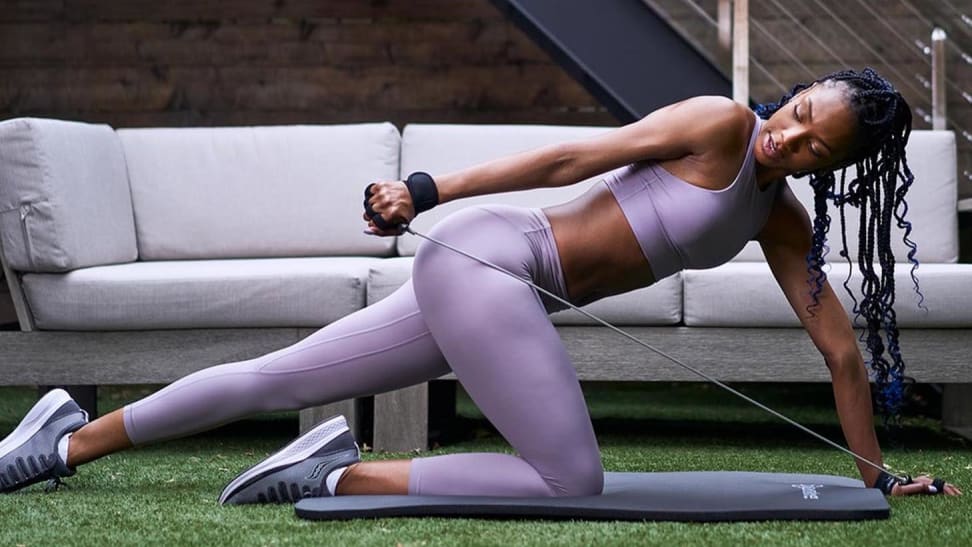 Credit:
P.volve
Credit:
P.volve
Products are chosen independently by our editors. Purchases made through our links may earn us a commission.
A few years ago, I became a regular at physical therapy after dealing with various knee injuries from running. I was sent home with a roll of KT tape and a few "functional movement" exercises that were supposed to get me back to my full range of motion. For those who aren't familiar–functional movement, or functional fitness training, utilizes exercises that mimic everyday movements.
The exercises weren't particularly fun, and as I soon left my physical therapy days behind, they fell by the wayside. But then, I had an opportunity to start exercising with P.volve, a popular workout method that utilizes functional movement. After my first few workouts, I found that it made me want to incorporate functional movement into my workout routine and, dare I say, have fun doing it.
What is P.volve?
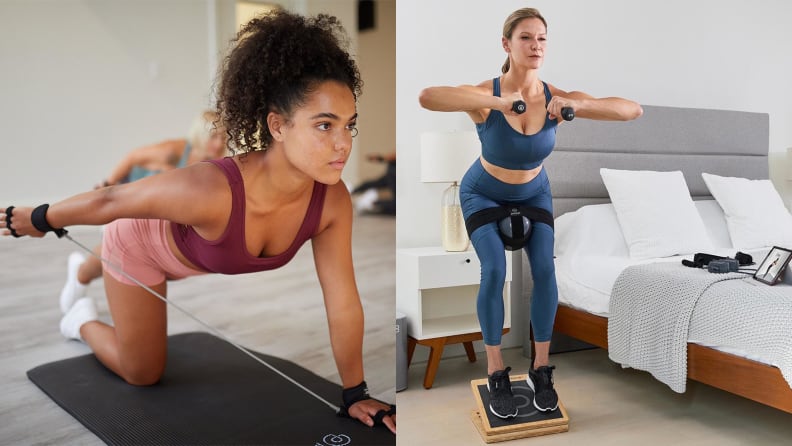
P.volve is a workout program that focuses on functional movement.
P.volve is a virtual and in-person exercise program that claims to to build strength, flexibility, mobility, and balance with resistance training and functional movement. This kind of training uses multiple muscle groups at once—involving what are called “compound movements”—and builds core strength to make everyday activities easier. For example, squats prepare you to sit down and stand up throughout the day, standing rows prepare you to pick things up and put them down, and both let you activate multiple muscles simultaneously.
P.volve has studios in New York, Chicago, and Los Angeles, and a live virtual studio that you can access on a computer, smartphone, or tablet for $15 a class or $160 a month for unlimited access. It also offers a digital membership app, which costs $19.99 a month or $14.99 a month for a 12-month commitment after a 14-day free trial. The app lets you customize your workout plan and schedule prerecorded classes. Typically, it only includes about 200 prerecorded classes, but right now, it also allows access to its live virtual studio for no additional cost.
P.volve’s signature session is its strength and sculpt class, but it also offers cardio, core, stretching, meditation, and pelvic floor strengthening classes. Classes most closely resemble a bodyweight Pilates or barre class. You perform basic movements like bicep curls, tricep extensions, single-leg deadlifts, and step-ups, and add resistance using resistance bands and light weights to make the workout more challenging.
P.volve claims to promote functional movements in its workouts by combining resistance training with “dynamic joint movement,” which means moving your joints and muscles to their full range of motion, to let you “move your body the way it’s truly meant to move and help reduce pain.” At least, that’s P.volve’s goal.
How does P.volve work?

P.volve sells a range of workout equipment.
P.volve gave me access to its live virtual studio and app for testing purposes. The app works like most other fitness platforms—you log in, search for a class that suits your needs for that day, and press play. To take a live virtual class, you sign up through Mindbody, a digital platform that connects users with in-person and virtual workout classes, via P.volve's site. P.volve then sends you a Zoom link 25 minutes before class starts via the email you signed up with. Once the Zoom class starts, you can turn your camera on so the instructor can see you and give live feedback or keep it off. Live classes range from 30 to 55 minutes. On the app, prerecorded classes range from five-minute stretches to full 80-minute strength and sculpting sessions.
P.volve sells its own equipment to use in class, both basic equipment like two-pound dumbbells and more specialized gear. Some of P.volve’s specialized equipment includes:
P.ball ($59.99): The p.ball is a rubber ball attached to a wide cloth resistance band that is worn around the thighs so the ball sits in between your legs, just below the pelvis. It’s used for exercises like fire hydrants and lunges, and you squeeze your inner thighs together when you bring your legs together while using it. The p.ball comes in one size with a 5.7 inch extender strap that clips like a bra with four clip lengths. P.volve also offers 7-inch, 8-inch, and 9.3-inch extenders for a more comfortable fit.
P.band ($29.99): The p.band is a resistance tube attached to fingerless gloves to provide a secure, no-slip grip. You slide your fingers into the band’s loops and it velcros around your wrists. The p.band is used to add resistance to upper body exercises like bicep curls and chest flys.
P.3 Trainer ($69.99): The p.3 trainer looks like a long resistance band with an ankle strap on one end and a handle on the other. You strap the trainer onto your ankle and hold the handle (or the weighted ball it also comes with) on the other end of the band to work your legs, core, and arms all at the same time.
Slant board ($89.99): The slant board is an angled step board used to perform step-ups and other leg exercises on an angle for deeper stretching and a greater range of movement in some exercises
P.volve sent me its $129.99 “essentials” kit, which includes the p.ball and p.band. It also includes items that, other than the branding, aren’t as unique to P.volve—3-pound ankle weights, an ankle band, and gliders. I used the p.ball and p.band in every class I took and the gliders often. I was never cued to add the ankle weights in a class, but I sometimes added them on my own for a more challenging workout. Though using the equipment levels up the workouts, you don’t need it to take classes. Before each session, P.volve discloses equipment that will be used in class as well as common items you can use as replacements. For example, in place of the p.ball you could use a small dodgeball-sized ball, and in place of the p.band you could use any resistance band you have.
What are P.volve’s virtual workout classes like?
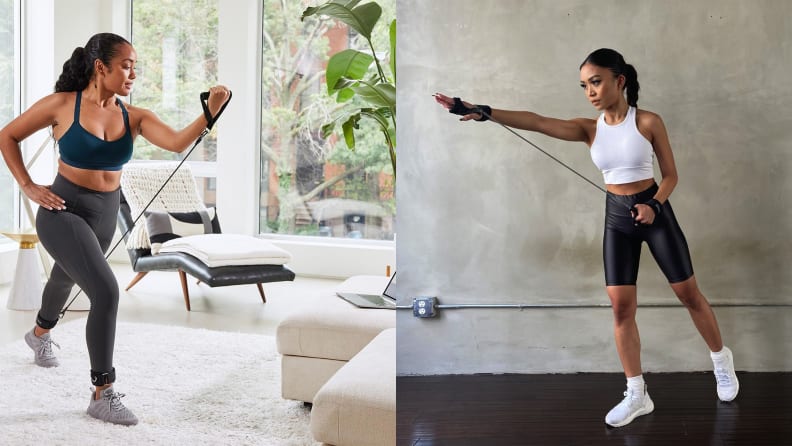
P.volve's virtual classes were fun and challenging.
The strength and sculpt classes felt uniquely challenging. Most classes claim to work the total body, but some “express” classes (which are shorter than the typical 55 minutes) focus on arms and abs or lower body.
I thought the workouts would get repetitive given the specialized equipment and virtual setup, but no two classes are the same. Instructors get creative with the exercises and patterns to find new ways to work your muscles and keep class entertaining. The classes were fun and upbeat, and kept me sweating the whole 55 minutes. I never got bored (though I did, at times, pray the instructor would hurry up and shout “only eight more” to relieve my poor, exhausted muscles) and I always looked forward to class.
What I like about P.volve
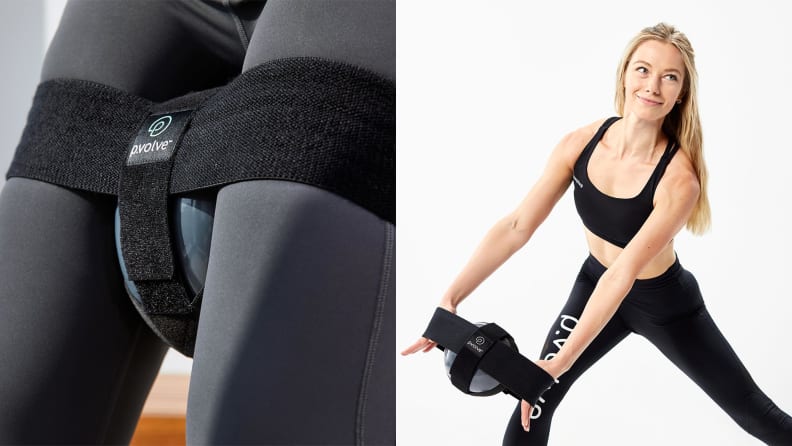
P.volve's emphasis on functional movement made for a different and challenging workout.
I love P.volve’s emphasis on functional movement, and I think it’s a standout component of the program. Every movement has a purpose. Many were framed as “exaggerated” everyday movements, like an “exaggerated walk” or an “exaggerated step,” which made it easy to understand why we were doing them.
And instead of centering the program around an aesthetic goal like “slimming your waist” or “toning your butt” (though, of course, some of that sneaks into the jargon), P.volve focuses on exercising for mobility. I was frequently given examples like “this is a movement you do when you bend over and pick up groceries” and “this single-leg movement will develop stability and balance,” which was a nice respite from motivation that centers around changing your body.
The instructors are cheery, upbeat, and motivating. In the live virtual classes I took, they made an effort to get to know you and help you learn and improve. Instructors gave live feedback and shoutouts, and remembered to offer modifications for class regulars who left their cameras on.
Instructors often reiterate the phrase “form comes first,” which is a vital concept for any exercise program. Without proper form, not only will you get a less effective workout, but you risk injury. Instructions were detailed and easy to follow, with modifications for those who may be uncomfortable doing certain movements. The instruction didn’t suffer from the virtual setup, and having amazing instructors helped me avoid common mistakes such as turning my knees in during lunges and single-leg movements, which is how I ended up needing functional movement in the first place.
I enjoyed the full body workout, and I felt thoroughly fatigued without weights. Many movements left me shaking during class. I was also sore for days, especially when I first started using P.volve—after my first class, it hurt to lift my arms to type and walk uphill to my apartment.
What I don’t like about P.volve
Though I love the workout, I don’t love the way the pricing is currently set up. The best value by far is the app, which offers access to the prerecorded classes for about $20 a month, and as of this publication, includes access to the live classes. As those normally cost $15 each or $160 per month for unlimited access, it's a no-brainer to opt for the the app and continue that membership if you like the prerecorded workouts, even if P.volve stops offering the live classes to app users. At that point, a single live class costs $15 (as opposed to $36 if you were to drop in to the NYC studio), and if you really can't live without the scheduled real-time sessions and the instructors shout-outs, you can opt into the $160 monthly membership fee for unlimited live classes.
Another bummer about the live virtual studio is that P.volve doesn’t tell you what equipment will be used in class until the 25-minute reminder email. This wasn’t a huge inconvenience for me because I was sent all the equipment I needed, but I would like the option to sign up for classes that utilize the equipment I have. You can get around this by taking prerecorded classes on the app, which list suggested equipment in the class description and can be filtered by said equipment.
Either way, whether you go for the app or virtual studio, it's helpful to have some equipment—and P.volve's branded gear is way too expensive. I'd suggest getting creative and getting a $19.99 dodgeball and $11.95 resistance band set to substitute for the $60 p.ball and $30 p.band.
Is P.volve worth it?
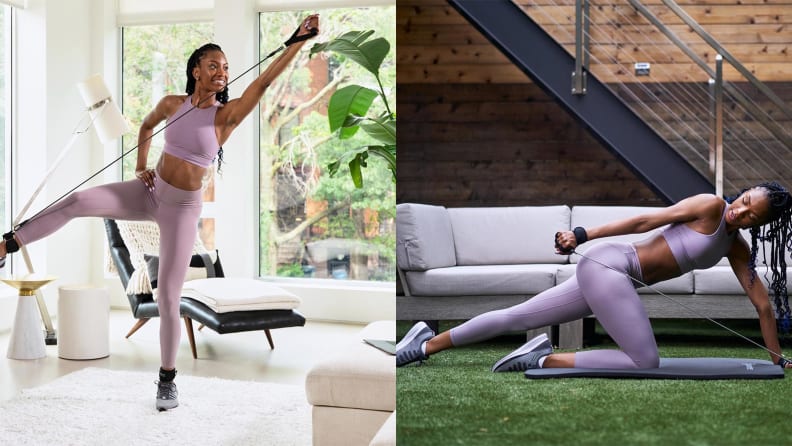
P.volve is a pricey workout, and the equipment is an added expense.
P.volve was a fun change in my workout routine, which usually involves running, lifting weights, and the occasional yoga class. I loved the instructors, the way I felt after a session, and every workout I tried.
Right now, I'd say the digital membership is definitely worth it—I recommend signing up for the two-week trial and taking a few live and prerecorded classes to see if you enjoy it enough to commit to a membership. If you like the experience of taking these boutique fitness classes at home, then you’ll love P.volve as much as I did.


